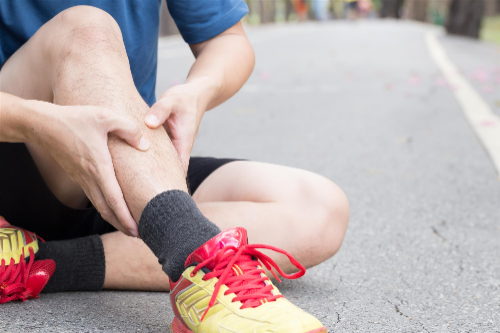What are Shin Splints? 
Being located on the beautiful Northern Beaches, we treat a number of runners and as a result see many complaints about shin pain.
Shin splints is a term used to describe pain in the front of the shin bone and the medical term used is “medial tibial stress syndrome” (MTSS). It can occur from repetitive loading to the shin bone and nearby tendons, muscles and connective tissue
What causes Shin Splints?
There are often a number of factors that contribute to shin pain. These can include one or many of the following:
- Sudden increase in training loads. This can be an extra session, the addition of sprint or hill training or increasing the intensity of your session.
- Inadequate rest between sessions
- Weak or tight calf muscles
- Poor hip stability
- Inappropriate footwear
- Excess body weight
- Poor running technique - For example stride length
 Common Symptoms
Common Symptoms
If you feel like you are developing shin splints. These are a few things signs to look for:
Pain in the front of your shin, typically the inside border of the shin and most often located in the bottom third of the shin bone.
Commonly when the pain is first felt it is at the start of the run, however improves as it warms up. As the bone continues to be overloaded with training, this pain can worsen and hurt for the whole duration of the run and following at rest. If left untreated, it can develop into a stress fracture and become painful while doing simple tasks such as walking and hoping.
The Single Hop Test
This is a test we use to determine the severity of the pain. If a patient is unable to perform repetitions of a single leg hop then we need to reduce the training load and treat appropriately.
Treatment
Reduce training load
This can often be hard for a keen athlete, however is very important to prevent further pain and damage. Depending on the severity, this may be reducing total volume, number of sessions, training intensity or in some extreme cases it may mean complete rest from running. During this period, we can still get most patients to cross train (bike, swim, elliptical) to keep the fitness up.
Addressing the contributing factors
We need to first find out the cause of the issue so we can effectively treat and prevent the issue from arising again. As mentioned above this can be a number of factors.
A lot of the time this involves strengthening of the calf muscles as well as strength and stability around the hip. These strength programs are individualised, depending on the deficiencies we find on testing. We also look at your training schedule and whether there has been a spike in load or intensity. Then we will have a look at your running biomechanics and see if this is contributing.
Returning to running
The last phase of treatment is returning back to normal training loads. This will vary between individuals and depend on how much rest you have had. The most important thing is that there is a slow progressive increase in training load and intensity, and we keep a close eye on the pain symptoms during and after sessions.
If you have any questions about shin pain, please let us know. Our team at Active Answers Physiotherapy in Seaforth will be able to get you back running pain free.